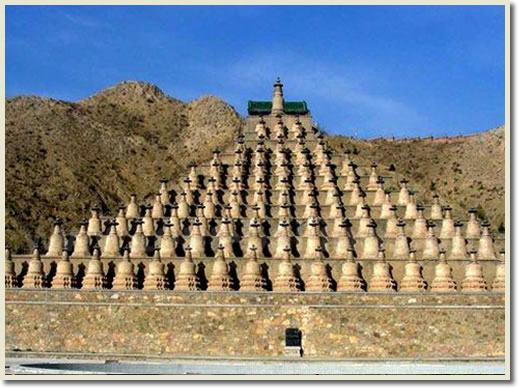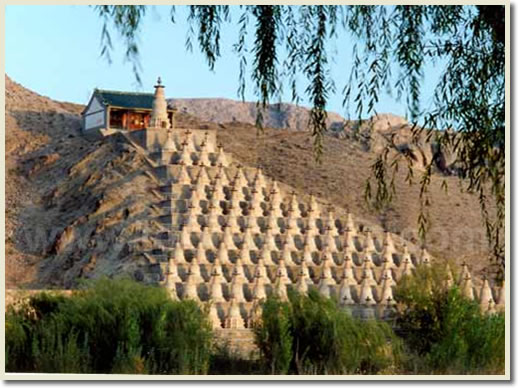Qingtongxia Travel Guide
Location:Qingtongxia is a city in the province of Ningxia in the north of China. It is located on the left (northwestern) bank of the Yellow River, opposite and a bit upstream of Wuzhong main urban area.
History:
Qingtongxia has a long history. It is said that man began to live in Qingtongxia about 10,000 years ago at the Paleolithic Age. Ningxia Hui Autonomous Region was founded in 1958, and Qingtongxia Water Control Project was founded earlier than that. In 1964, Qingtongxia Aluminium Factory was built due to the need of national defence. Qingtongxia City was listed as one of the economic key areas in 1998.
Qingtongxia is considered as an ancient but modern mark of the civilization of the Yellow River.
Transportation:
Although located in the inland area, Qingtongxia enjoys a very convenient transportation.
Baotou-Lanzhou Railway and Dagu Railway pass through the city, and several highways go from north to south. Ningxia Hedong Airport is only 40 kilometers from Qingtongxia.
Hotels:
Qingtongxia Hotel is the best hotel in this city which is located in the center of the city. With 10 floors, Qingtongxia Hotel is provided with a reception hall, a supermarket, a KTV room, a bank, a bowling alley, a parking place, etc.
Qingtongxia is a county-level city within the prefecture-level city of Wuzhong, so you can also go to Wuzhong City to find a hotel.
Dining:
Qingtongxia snacks combine traditions in Central Plains with Muslim flavor. You can enjoy Muslim Food, including carp in sweet-sour sauce, steamed lamb meat, and the entrails of a sheep. You can also enjoy the Hui local snacks, Fa Cai, for example. You can go to the Hui houses, they are very hospitality.
Weather:
Qingtongxia is an inland city, bearing a temperate semi-dry continental climate. It has four distinct seasons, but summer is not hot. Being one of the cities with most abundant sunshine all around the nation, Wuzhong is rich land favorable for the planting of agriculture products.
Generally, the temperature varies greatly during the day and night.
Attractions:
108 Lamaist Stupas
As the name suggested, 108 Lamaist Stupas is a pagoda forest of 108 Lamaist brick stupas. It is situated 20 kilometers south of the Qingtongxia City. As to the age of theses pagodas, no verdict has been worked out yet. According to textural research, it has no less than 900 years of history.
The tallest one measuring 11.5 feet tall stands on the top and the rest are smaller, all measuring 8.2 feet tall. The cluster is in the shape of triangle and composed of 108 pagodas in 12 rows by odd number 1, 3, 3, 5, 5, 7, 9, 11, 13, 15, 17, and 19 from above to below.
The pagoda complex has a unique layout and ranks among the three pagoda complexes in China.


Questions & Answers:




